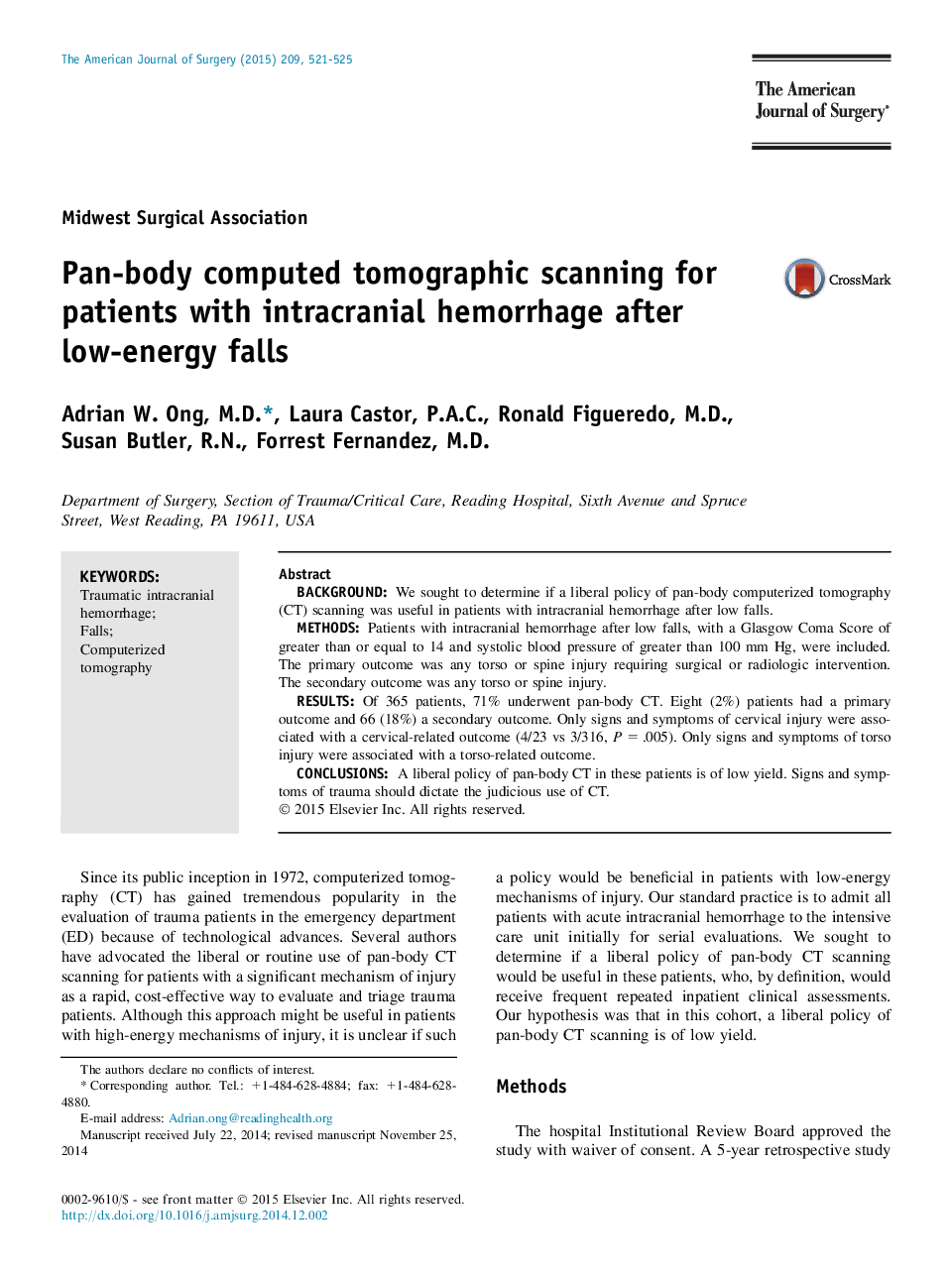| Article ID | Journal | Published Year | Pages | File Type |
|---|---|---|---|---|
| 4278478 | The American Journal of Surgery | 2015 | 5 Pages |
BackgroundWe sought to determine if a liberal policy of pan-body computerized tomography (CT) scanning was useful in patients with intracranial hemorrhage after low falls.MethodsPatients with intracranial hemorrhage after low falls, with a Glasgow Coma Score of greater than or equal to 14 and systolic blood pressure of greater than 100 mm Hg, were included. The primary outcome was any torso or spine injury requiring surgical or radiologic intervention. The secondary outcome was any torso or spine injury.ResultsOf 365 patients, 71% underwent pan-body CT. Eight (2%) patients had a primary outcome and 66 (18%) a secondary outcome. Only signs and symptoms of cervical injury were associated with a cervical-related outcome (4/23 vs 3/316, P = .005). Only signs and symptoms of torso injury were associated with a torso-related outcome.ConclusionsA liberal policy of pan-body CT in these patients is of low yield. Signs and symptoms of trauma should dictate the judicious use of CT.
